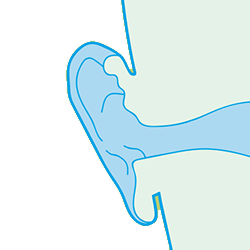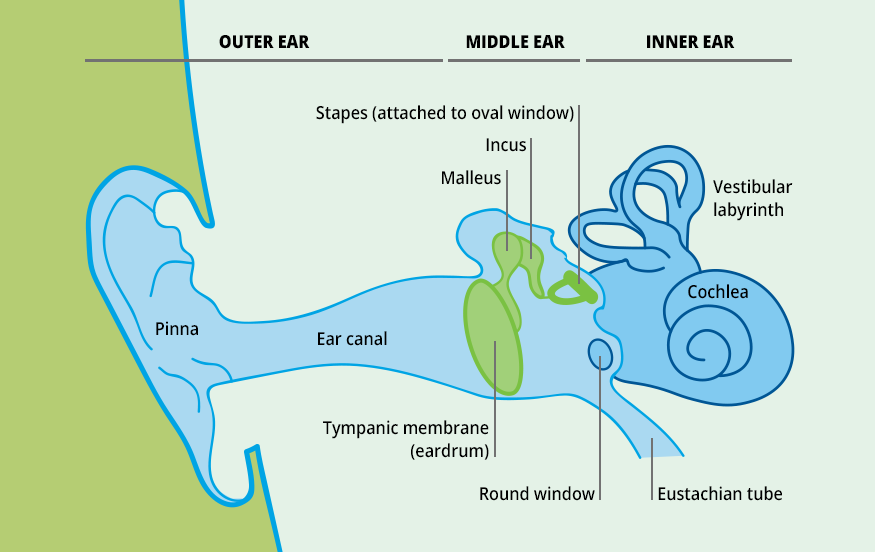“MEASURING SOUND” HANDBOOK”
> DOWNLOAD PDF
Sound is such a common part of everyday life that we rarely appreciate all of its functions. It provides enjoyable experiences such as listening to music or to the singing of birds. Sound enables spoken communication with family and friends. It can alert or warn us — for example with the ringing of a telephone, or a wailing siren.
Sound may be defined as any pressure variation (in air, water or other medium) that the human ear can detect. The most familiar instrument for measuring pressure variations in air is the barometer.
However, the pressure variations which occur with changing weather conditions are much too slow for the human ear to detect — and hence do not meet our definition of sound. But, if variations in atmospheric pressure occur more rapidly — at least 20 times a second — they can be heard and hence are called sound.
The number of pressure variations per second is called the frequency of the sound, and is measured in Hertz (Hz). The frequency of a sound produces it's distinctive tone. Thus, the rumble of distant thunder has a low frequency, while a whistle has a high frequency. The normal range of hearing for a healthy young person extends from approximately 20 Hz up to 20 000 Hz (or 20 kHz) while the range from the lowest to highest note of a piano is 27,5 Hz to 4186 Hz.

The weakest sound a healthy human ear can detect has an amplitude of 20 millionths of a Pascal (20 μPa) — some 5000000000 times less than normal atmospheric pressure. Amazingly, the ear can tolerate sound pressures more than a million times higher. Thus, if we measured sound in Pa, we would end up with some quite large, unmanageable numbers. To avoid this, another scale is used — the decibel or dB scale.
The decibel is not an absolute unit of measurement. It is a ratio between a measured quantity and an agreed reference level.
The dB scale is logarithmic and uses the hearing threshold of 20 μPa as the reference level, defined as 0 dB.
When we multiply the sound pressure in Pa by 10, we add 20 dB to the dB level. So 200 μPa corresponds to 20 dB (re 20 μPa), 2000 μPa to 40 dB and so on. The sound pressure levels (SPL) in dB and Pa of various familiar sounds are shown in the figure.
We have already defined sound as any pressure variation which can be heard by a human ear. This means a range of frequencies from 20 Hz to 20 kHz for a young, healthy human ear. In terms of sound pressure level, audible sounds range from the threshold of hearing at 0 dB to the threshold of pain which can be over 130 dB.
Although an increase of 6 dB represents a doubling of the sound pressure, an increase of about 10 dB is required before the sound subjectively appears to be twice as loud. (The smallest change we can hear is about 3 dB).
The subjective or perceived loudness of a sound is determined by several complex factors. One such factor is that the human ear is not equally sensitive at all frequencies. It is most sensitive to sounds between 2 kHz and 5 kHz, and less sensitive at higher and lower frequencies.
 LEARN MORE
LEARN MOREAnatomy of the EarThe human ear consists of three main parts; the outer ear, middle ear and inner ear. The outer ear, consisting of the pinna and auditory canal, collects the airborne sound waves which then vibrate the eardrum, which is the interface with the middle ear.
The middle ear acts as an impedance matching device and has three small bones operating as a set of levers. These bones transfer the vibration to the inner ear which consists of two separate systems, the semi-circular canals for controlling balance and the cochlea. The cochlea is a fluid-filled, snail-shaped tube which is divided longitudinally into two parts by the basilar membrane.

Prolonged exposure to loud sounds causes damage to the hair cells with the result that hearing ability becomes progressively impaired. At first, damage to a few hair cells is not noticeable, but as more of the hair cells become damaged, the brain can no longer compensate for the loss of information. Loss of hearing caused by noise exposure is normally greatest at those frequencies (around 4 kHz) where the ear is most sensitive.
Download the full handbook
Please sign in to download.
Sign-up is free and gives you full access to our Knowledge Center, with guides, primers and handbooks, technical notes and more.


